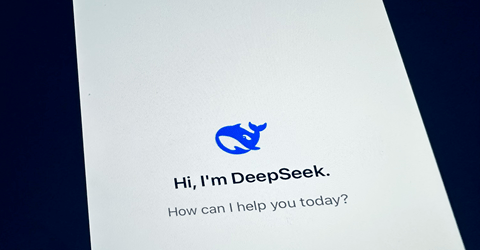
Is DeepSeek Really a Threat?
DeepSeek has historically reshaped industries through technological breakthroughs, as seen in Nikola Tesla’s invention of alternating current (AC), which surpassed Thomas Edison’s direct current (DC) system by being more cost-effective and efficient, ultimately revolutionizing the electrical power industry.
Now, as artificial intelligence (AI) advances at an unprecedented pace, DeepSeek, a Chinese AI company, is raising questions about whether its breakthrough technology could disrupt the AI industry in a similar fashion.
What is DeepSeek?
DeepSeek is an AI company claiming to have developed models that match the performance of leading AI systems like OpenAI and Google, but with significantly lower training and operational costs. By using low-end Nvidia chips instead of expensive hardware, DeepSeek’s innovation could disrupt the AI market, making powerful AI tools more affordable and accessible.
If validated, this technology could reduce reliance on costly data centers and shift the AI landscape, enabling broader, cost-effective adoption. However, skepticism remains, as such disruptive claims have often been exaggerated or unproven in tech history. Here are seven key points to consider about DeepSeek and its potential impact.
Read More: Economic Impact of Crime: A Study in Latin America and the Caribbean
Table of Contents
1. The Evolution of AI
AI has evolved over several decades, yet it wasn’t until the launch of OpenAI’s ChatGPT in late 2022 that AI truly entered the mainstream. ChatGPT quickly captivated users worldwide, reaching one million users in five days and 300 million weekly users within two years.
While its conversational abilities created the illusion of a new breakthrough, the core technology behind these large language models (LLMs) remains rooted in pattern recognition and statistical predictions. This represents a significant leap, but not necessarily a revolutionary one—AI systems still rely on historical data to make predictions about the future, a limitation that has sparked skepticism among some experts.
Read More: The Dark Side of Monopolistic AI Innovations, You Must Know!
2. DeepSeek’s Alleged Breakthrough
In 2024, DeepSeek announced that it had achieved AI performance comparable to that of OpenAI and Google—using only low-end Nvidia chips and at a fraction of the usual cost. If verified, this breakthrough could significantly alter the AI landscape, especially in terms of cost and resource consumption.
The AI industry currently relies on expensive, high-end hardware and massive data centers, consuming vast amounts of electricity. DeepSeek’s claimed efficiency could democratize access to AI, making it more affordable and accessible to a broader range of users and developers.
3. The Economic Implications
If DeepSeek’s technology proves legitimate, it could dramatically reduce the demand for high-end AI chips and large-scale data centers. Nvidia, which has invested billions in its AI chips, saw its market value plummet by $600 billion after DeepSeek’s claims were made public.
The potential for lower-cost AI could also reduce the environmental footprint of AI systems, as the reliance on resource-heavy infrastructure would decrease. This shift could pave the way for more sustainable AI development, benefiting smaller companies and reducing the barriers to entry for new players in the AI field.
Read More: Australia’s Anti-Social Media Ban for Under-16s
4. Geopolitical Concerns
The news of DeepSeek’s development has sparked significant geopolitical concern, particularly in the United States. In response to China’s growing influence in the AI sector, the US has proposed significant investments in non-defense AI research to remain competitive. Some have even likened DeepSeek’s innovation to the Soviet Union’s 1957 launch of Sputnik—an event that ignited the US space race.
While the US government and private sector have focused heavily on maintaining technological supremacy, it is important to recognize that AI advancements, regardless of their origin, can benefit the global community. Fear of competition should not overshadow the potential for collaboration and mutual progress.
5. The Broader Impact of AI Innovation
Technological progress, particularly in AI, should be viewed as an opportunity to solve pressing global challenges, from healthcare to climate change. If DeepSeek’s AI models prove effective, they could provide solutions that are both more affordable and scalable. However, this innovation’s potential goes beyond just cost savings.
A more efficient AI could unlock new applications in a variety of industries, from education to manufacturing, where cost-effective solutions could have a transformative impact. Reducing the financial and environmental costs of AI could broaden its scope and accessibility, allowing more people and organizations to leverage its capabilities.
Read More: The Economic Consequences of Trump’s Second Administration
6. The Importance of Open-Source Development
DeepSeek’s low-cost approach to AI could have significant implications for the future of open-source development in the AI field. Currently, the industry is dominated by a few tech giants that own the most powerful AI models and infrastructure. If DeepSeek’s claims are true, it could level the playing field by providing smaller companies and individual developers with more accessible AI tools.
The ability to develop AI systems without relying on expensive hardware and infrastructure would foster greater innovation and competition. Open-source AI models could also lead to more ethical and diverse applications of the technology, as they would be available to a broader range of people and organizations.
7. Innovation and Global Collaboration
As AI continues to advance, it is crucial to focus not on competing for technological supremacy but on fostering global collaboration. The rise of DeepSeek and other AI innovators highlights the potential for breakthroughs that can benefit society as a whole. Rather than viewing foreign technological advancements as threats, we should embrace them as opportunities to drive progress and solve complex global issues.
The future of AI is not about which country or company leads the charge, but how we, as a global community, can harness its potential for the betterment of all.
Read More: The IMF Surcharge Policy Must Be End
Bottom Line
DeepSeek’s breakthrough, if verified, could reshape the AI industry in profound ways, just as Tesla’s AC system revolutionized the world of electricity. Whether or not the company’s claims are true, the innovation it represents could mark a significant turning point in AI development.
Rather than focusing solely on competition or viewing these advancements through a geopolitical lens, we should embrace the possibilities they offer for broader access to AI, more sustainable practices, and a more collaborative approach to solving global challenges. The true value of AI lies not in its country of origin but in how it can be used to improve lives around the world.





